14th to 18th March 2020
Please note: A link to a video covering material included in this blog post can be found at the bottom of the post.
We awoke to a view over Lake Hume and a chilly morning with blue skies. Great touring weather but the tour is almost over.
The plan had been to stay at Corryong or Khancoban the previous night and drive the Alpine Way to Jindabyne that day But we had not reckoned with the Bush Fire Relief Fun Day to be held that day in Corryong, or the weather. There was not a bed to be had in that area so we ended up at Hume Weir, as reported in the previous post. And despite our clear morning the forecast for Thredbo was snow above 1,400 metres, rain and temperatures ranging from zero to 6C. The chill wind was a north easterly, blowing from where we had intended to be. It felt as if the snow was already falling.
So we started the day by taking a look at the Hume Dam retaining wall and floodgates (pictured in the previous day’s post). The floodgates don’t appear to have been used recently. Then, rather than spend the day with the tedium of a four lane highway all the way, we added a side trip.
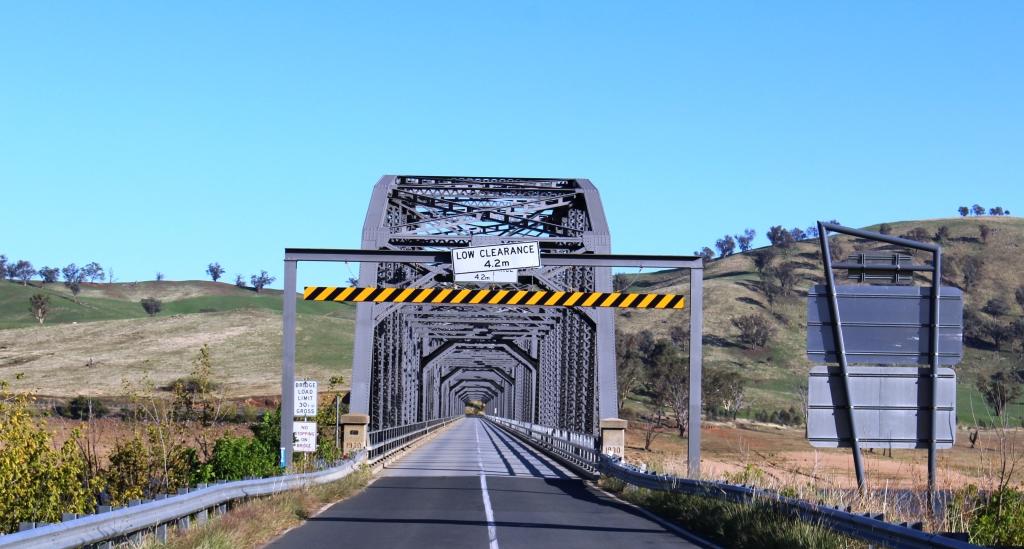
We crossed the Murray River proper over a rather magnificent iron bridge just north of the dam, back into Victoria, at the small town of Bellbridge. The road that we had travelled the previous day followed the inlets on the south side of southern arm of Lake Hume that swing back into Victoria, the inlets created by streams flowing in from the south. Today we followed the NSW/Victorian border, which is the southern bank of the Murray, initially following the south bank of the northern arm of the lake and then driving mostly within sight of the stream.
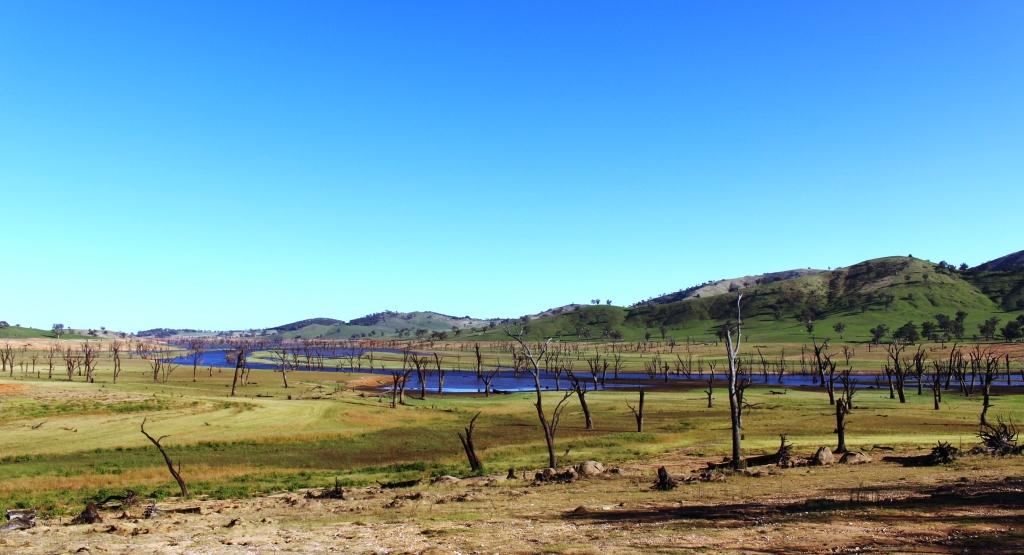
After 95 km we crossed the Murray at Jingellic, pausing there for coffee. It is a place that I had wanted to see, after passing signs on the Hume Highway that point towards it, for the better part of 60 years.
There is not much to the town. It has just a few houses, a general store, a show grounds that double as a low cost caravan park and a pub. We missed the pub. It was down a side road out of sight.
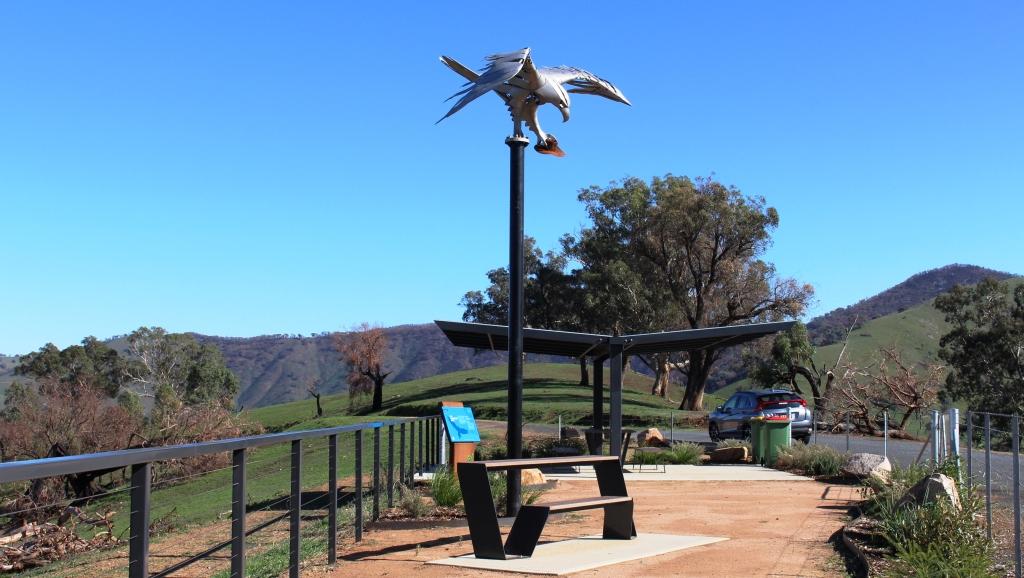
The countryside is beautifully green with mobs of cattle, mostly dairy cows, grazing on the lushness. Periodically, we came upon caravans parked right on the river bank. We passed the last of the backed up water well before we reached the point to which the water had backed in earlier days.
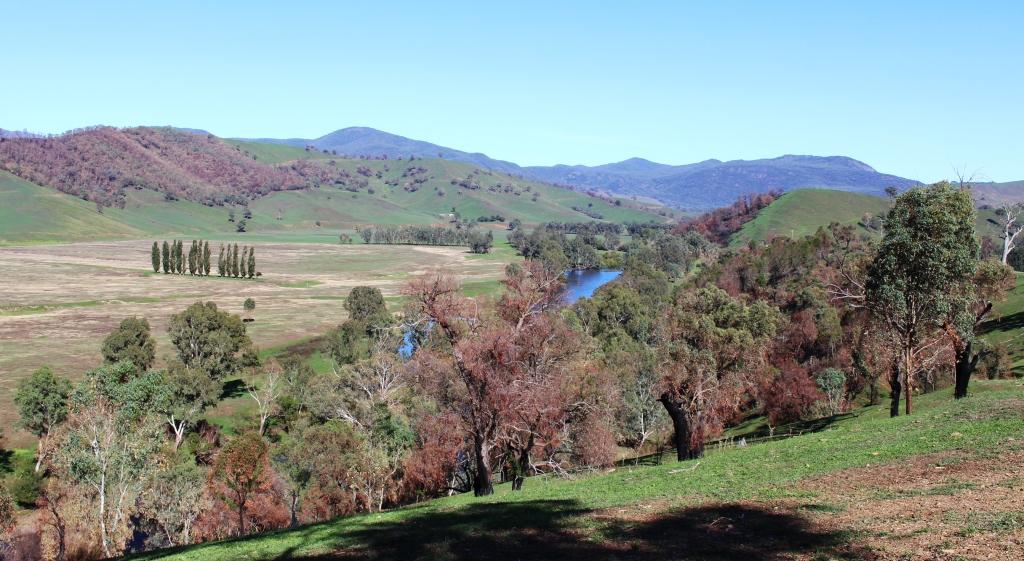
Just before we crossed the river at Jingellic we started to pass through extensive burned areas. Whole mountain sides of bush and pine plantations had been scorched. Jingellic had not been missed by much. Fires north of there, near Tumbarumba, were reported on news broadcasts as being quite severe with that town largely evacuated.
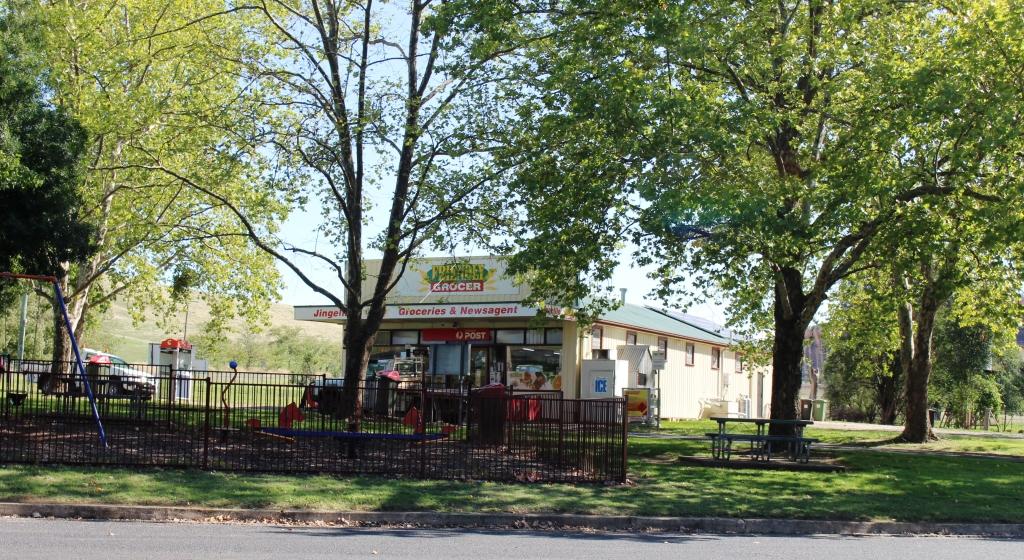
We returned to the Hume Highway at Holbrook, an inland town known as the home of a submarine. One of the Japanese subs that attacked Sydney Harbour during WWII was on display in a park for as long as I can remember. But the Japanese sub has gone and been replaced by the top half (cut off at the waterline) of HMAS Otway, a decommissioned Australian submarine.
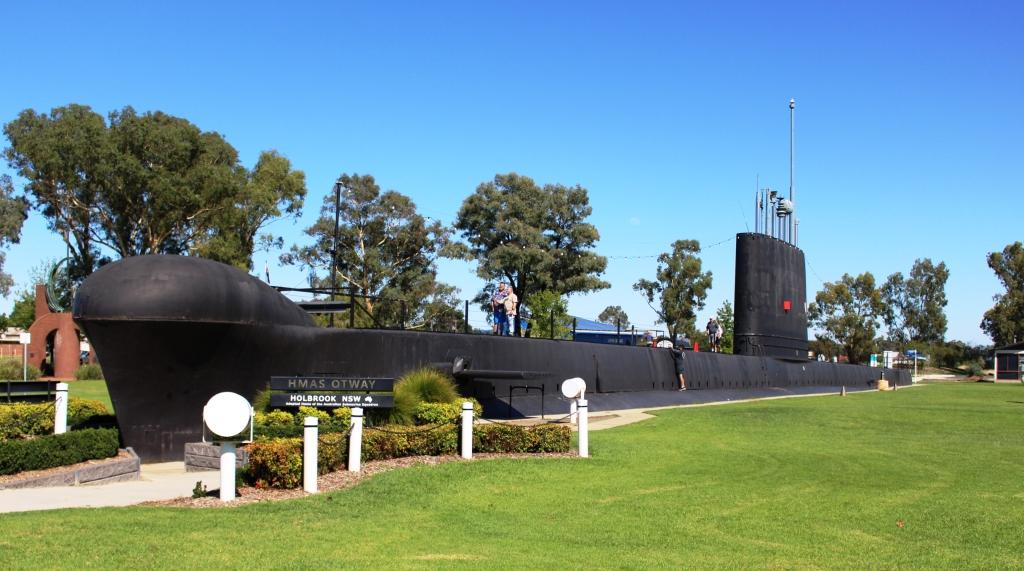
I can’t find what happened to the Japanese sub but I think it is in a museum somewhere. Or was it returned to the Japanese? Can someone tell me?
The Hume Highway was not carrying much traffic so we made good time, pausing at Gundagai for lunch and arriving at Canberra just as rain started to fall. We were booked into Canberra for two nights. There are always things to see in Canberra. A visit to the War Memorial is never a waste of time so was on the agenda.
Canberra is a widely spread city. Our accommodation was at a hotel at Gungahlin, in the outer northern suburbs. We had a drive of near to 20 km to our first visiting point.

Two nights in Canberra meant a sleep in. Partly to let the clouds drift away and partly to be a bit lazy, we spent the morning in, delaying sightseeing until after an early lunch.
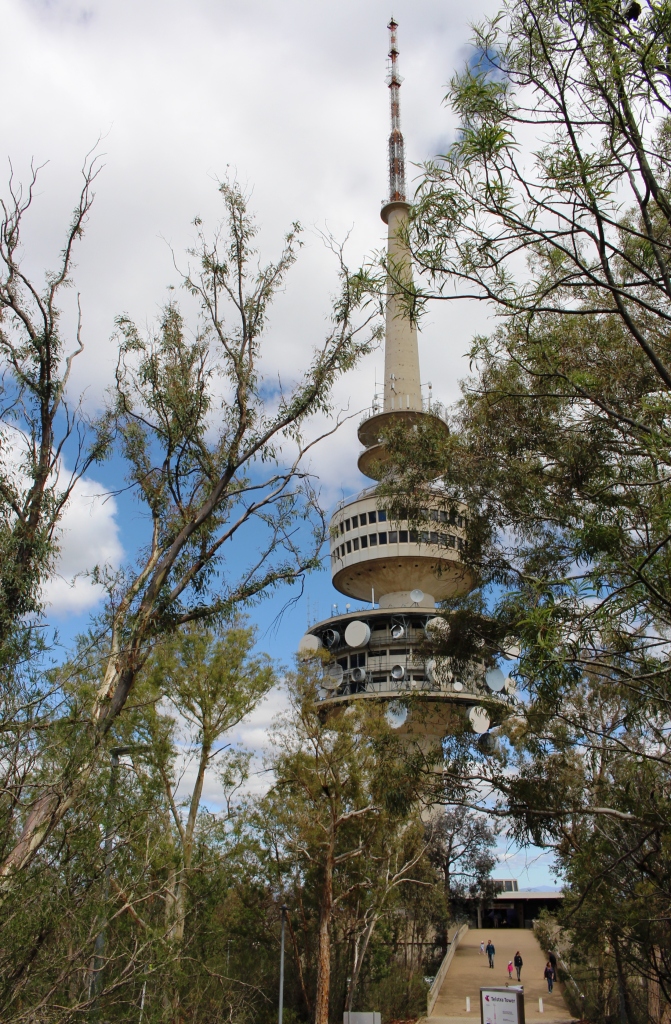
If you want to see all of Canberra there is only one place to go and that’s to the Telstra Tower on Black Mountain. This rocky peak is located in the middle of Greater Canberra. It rises to 812 metres above sea level. The Telstra Tower is at the top. Two levels of observation decks are accessible by elevator. This vantage point allows for a full overview of Canberra, its suburbs and the surrounding hills and countryside.
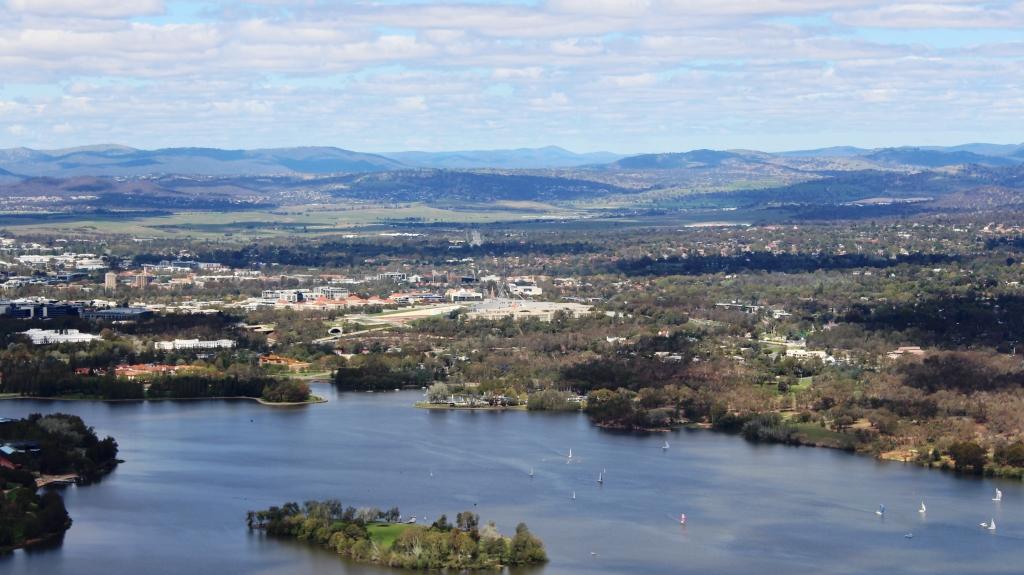
I took a series of photos giving views all the way around from the top open deck. A selection appears below.
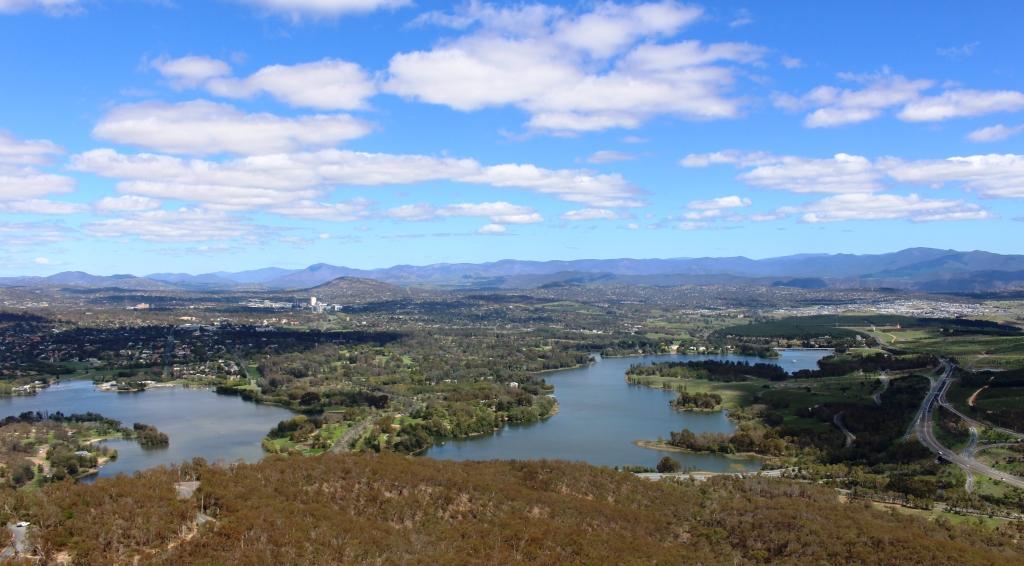
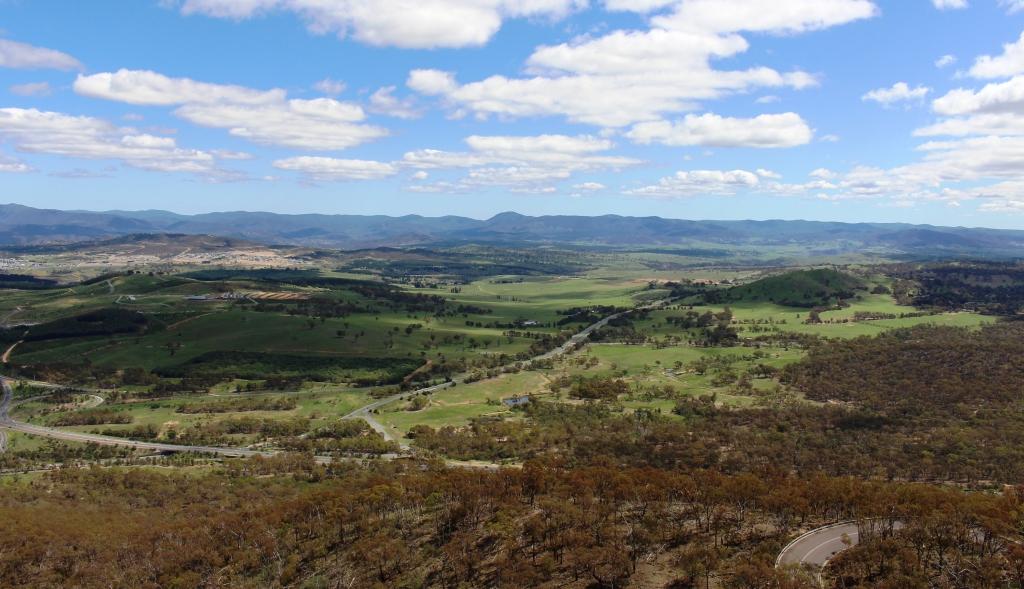
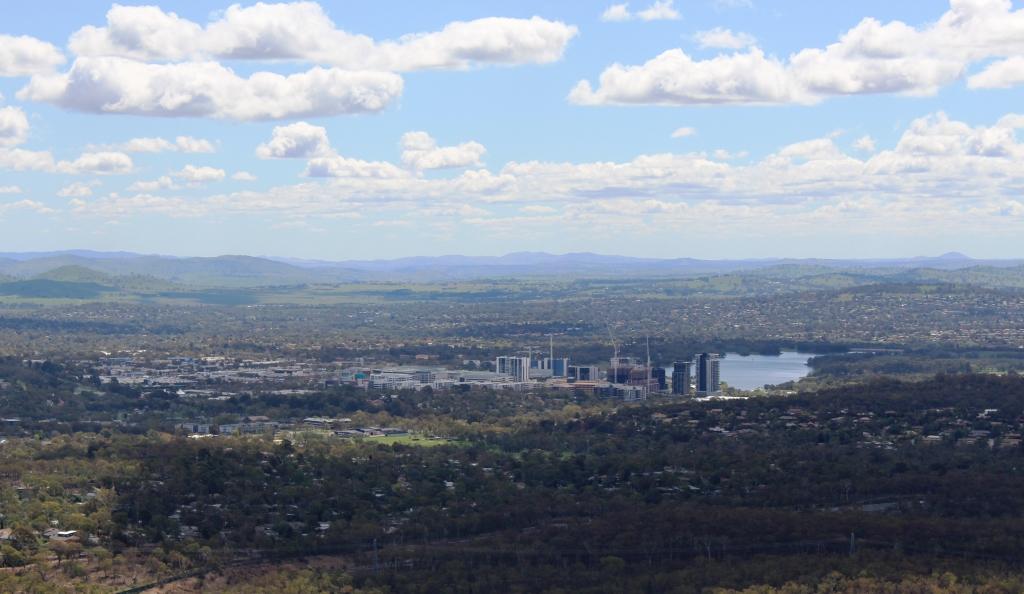
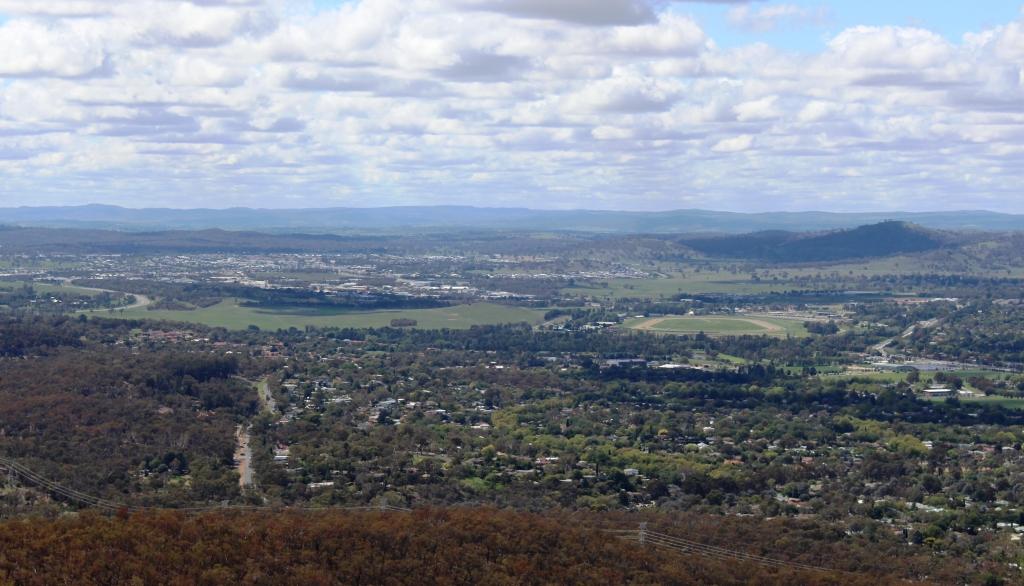

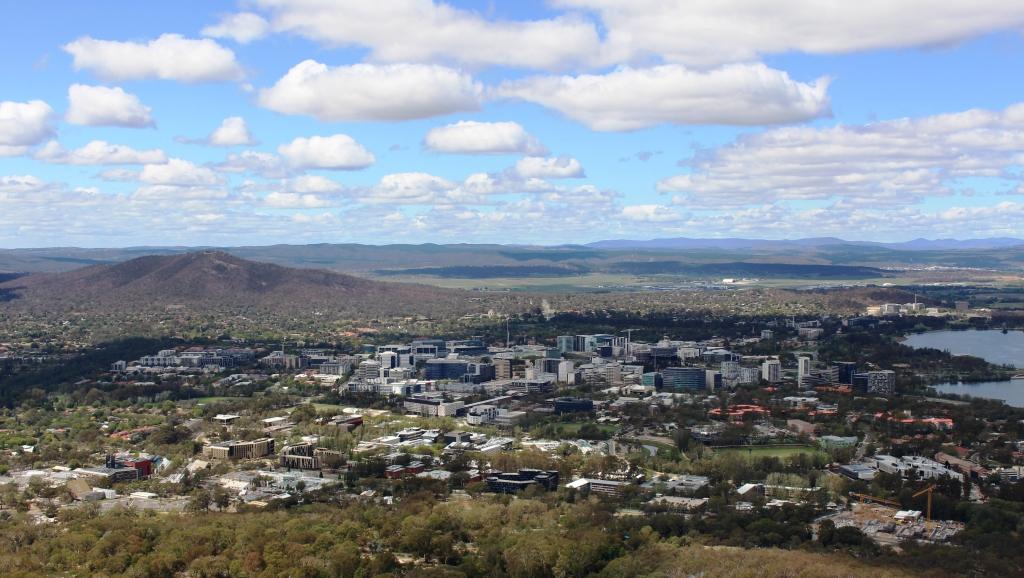
We then visited the Australian War Memorial. We normally spend some time there when we visit Canberra. There are normally changes and new exhibits, particularly if we have not visited recently.
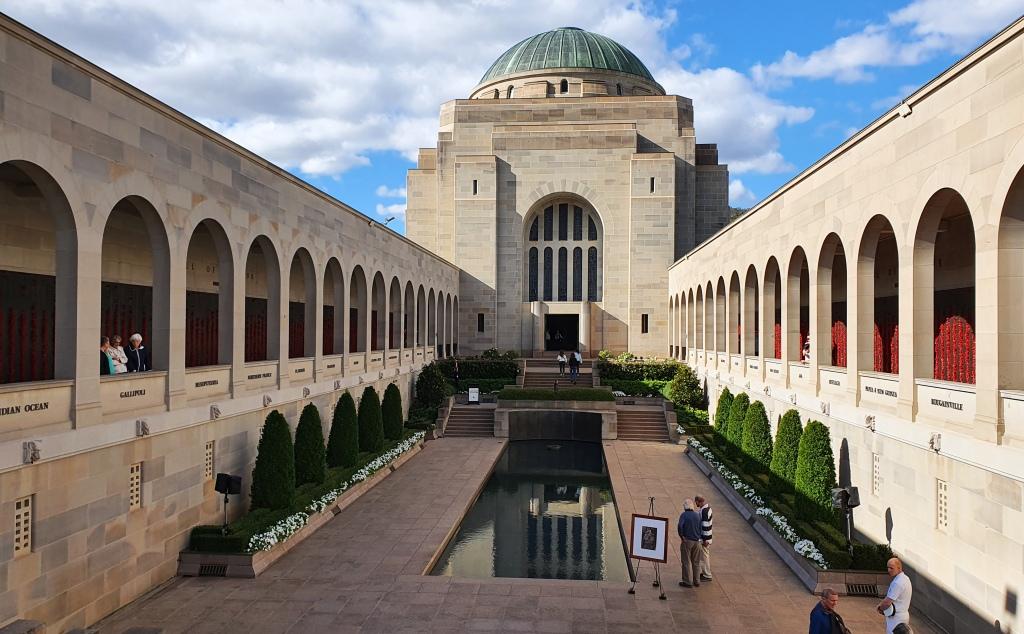
I didn’t take any photos of the displays but only some outside shots. Because we were there towards the end of the day we were able to stay for the daily closing ceremony. We had time for a quick afternoon tea break at the conveniently located Poppy’s Café. We had to be quick as they were about to close.
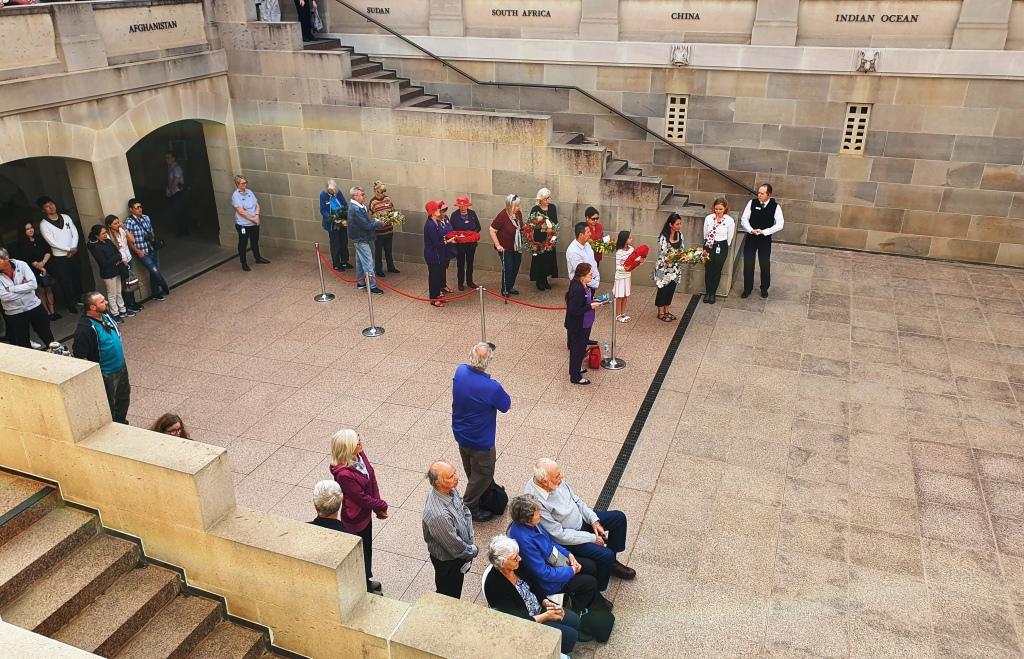
Each day a different service person who lost their life during hostilities is featured. Their photo is displayed and their story told by a currently serving member of the armed forces. Often relatives of the fallen service person are present and take part in a wreaths laying ceremony. The National Anthem is sung and the last post sounded. The ceremony is held in the central court near to the reflective pool and the eternal flame. It was a very moving experience.
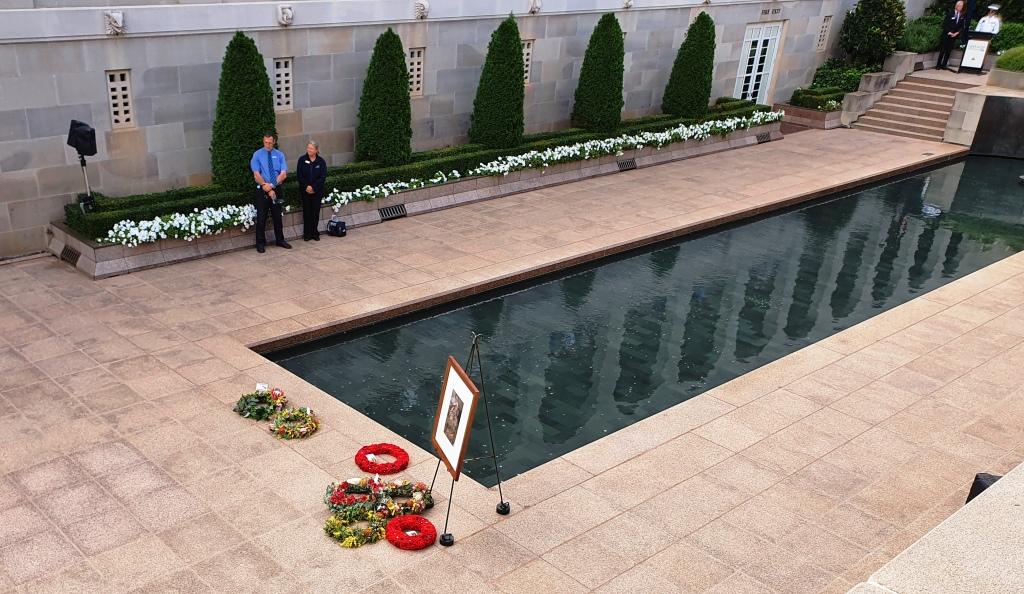
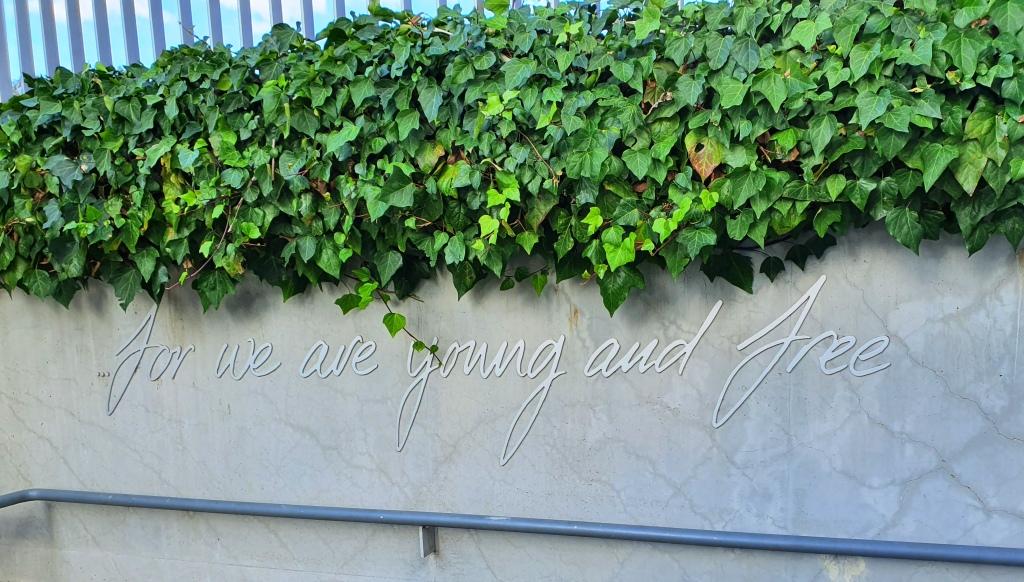
We had planned to spend a couple of days at daughter Briony’s unit in Sydney, as she was away for a few days. But with the seriousness of the corona virus situation becoming clearer, we had decided to give up on that plan and head home.
Our interim destination became Bowral, in the NSW Southern Highlands, to visit Ruth’s youngest brother and our sister-in-law. We had an invitation to lunch. Following this very pleasant occasion we departed mid afternoon for Katoomba, to spend the second last night of our trip.
Travel via Katoomba was a longer way home but we wanted to see fire damage in the Blue Mountains. We had heard that fire had burned very close to the Three Sisters. There was no sign of fire damage from the Great Western Highway.
It was drizzly and cold when we arrived at the motel so we deferred visiting Echo Point until next morning.
Big mistake! Next morning dawned with a thick fog over the mountains that hung well below the altitude of Katoomba. We didn’t break out of the fog until well on the way to Lithgow.
We spent one more night along the way at Moree, arriving home about mid afternoon on Wednesday 18th March.
In all we had driven just over 10,000 km and had been away for 50 days. The distance Melbourne – Devonport – Melbourne did not register on the odometer, of course but was a further 436 km each way.
Would we visit Tasmania again? Yes! But realistically, at our age, we don’t expect to have the opportunity again.
